|
Soyuz-2-1v (formerly Soyuz-1)
|
||||||||
| DEVELOPMENT HISTORY | |||||||||
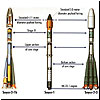 |
During the first decade of the 21st century, TsSKB Progress in Samara, the developer of the Soyuz series of rockets, continued efforts to upgrade this legendary family of launchers. Around 2007, TsSKB Progress proposed yet another intermediate step on the road to integrating NK-33 engines inherited from the N1 rocket into the Soyuz family. |
||||||||
Development and operation of the Soyuz-1 rocket As of mid-2008, TsSKB was preparing to defend the preliminary design of the vehicle in September 2008. The funding breakthrough for the development of Soyuz-1 came after a successful demo firing of the NK-33 engine on June 2, 2008. |
|||||||||
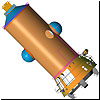 |
Soyuz-2-1v flies its first mission The Soyuz-2-1v rocket made a successful debut on Dec. 28, 2013, lifting off from Plesetsk Cosmodrome. The vehicle carried an experimental version of the Aist satellite and a pair of SKRL-756 radar-calibration spheres, which were released from a Volga upper stage. |
||||||||
| TECHNOLOGY | |||||||||
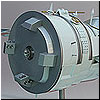 |
Within the Soyuz-1 development project, TsSKB also proposed a Volga upper stage, identified in official documentation as "block vyvedeniya" (insertion stage). Serving as a second stage of the Soyuz-1, the Volga would deliver payload with a mass up to 1,400 kilograms into final orbit with an altitude up to 1,500 kilometers during its mission lasting no more than 24 hours. |
||||||||
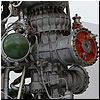 |
A legendary NK-33 rocket engine was originally developed to carry Soviet cosmonauts on their way to the Moon onboard a giant N1 rocket. After the ill-fated lunar effort was aborted in 1974, dozens of already manufactured NK-33s ended up in storage. For decades, engine developers searched for a new job for the capable powerplant. Finally, at the end of the first decade of the 21st century, NK-33 had a real chance to fly, this time powering both American and Russian rockets. |
||||||||
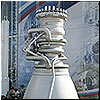 |
Since Soyuz-1 would use a limited cache of old NK-33 engines, Russia's leading rocket propulsion enterprise - NPO Energomash - proposed its RD-193 engine as an eventual replacement for NK-33, if all promises to restart the production of the Moon Race-era NK-33 do not materialize. NPO Energomash representatives cited this role for RD-193 as late as 2012. |
||||||||
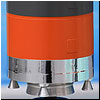 |
In March 2010, Roskosmos announced that the RD-0110R (14D24) engine developed by KBKhA design bureau in Voronezh would steer the Soyuz-1 (Soyuz-2-1v) rocket during the first stage of the flight. Four chambers of the RD-0110 engine have capability to rotate in a single plane each, providing a three-axis stabilization. Via its heat-exchanger system, the engine is also designed to heat up helium used for pressurization of propellant tanks in the rocket. |
||||||||
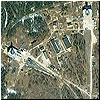 |
Launch pads for Soyuz-2-1v The Soyuz-1 rocket would start flying from an existing launch facility in Plesetsk. In addition, in the fall of 2011, TsSKB Progress announced that it was considering launching the Soyuz-1 rocket (then renamed Soyuz-2-1v) from the operational launch complex in Baikonur and a yet-to-be-built launch pad at the future Vostochny launch site. By June 2013, a decision was made to refurbish Site 16 in Plesetsk for processing and launch of Soyuz-2-1v as well. |
||||||||